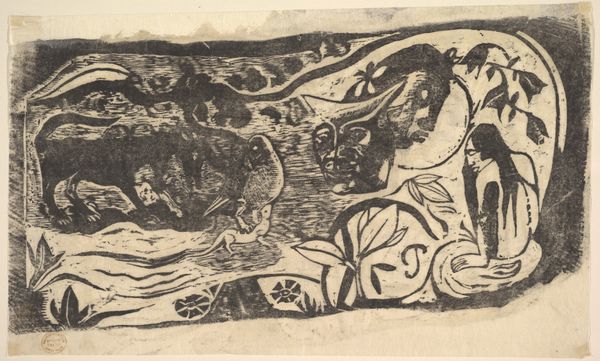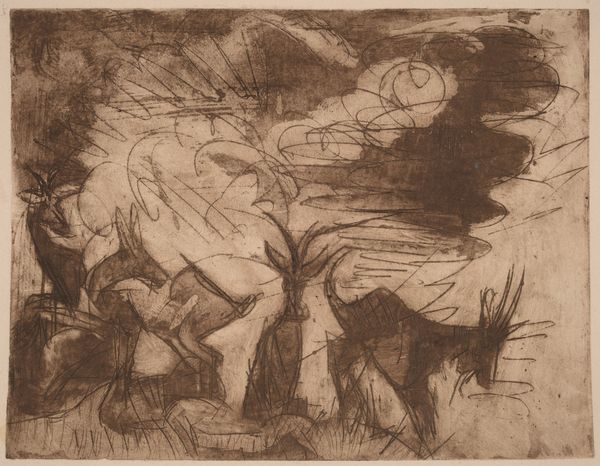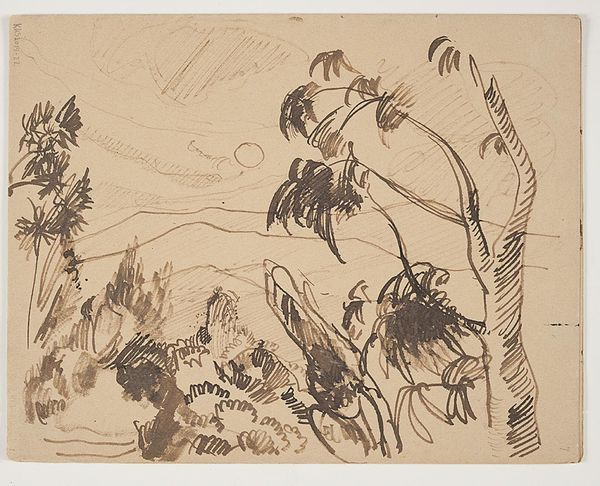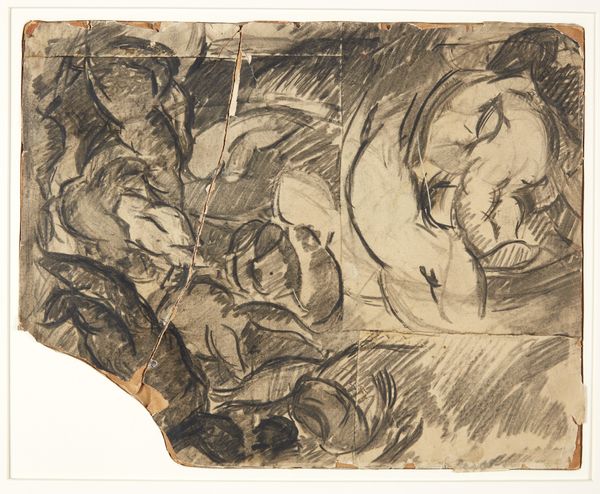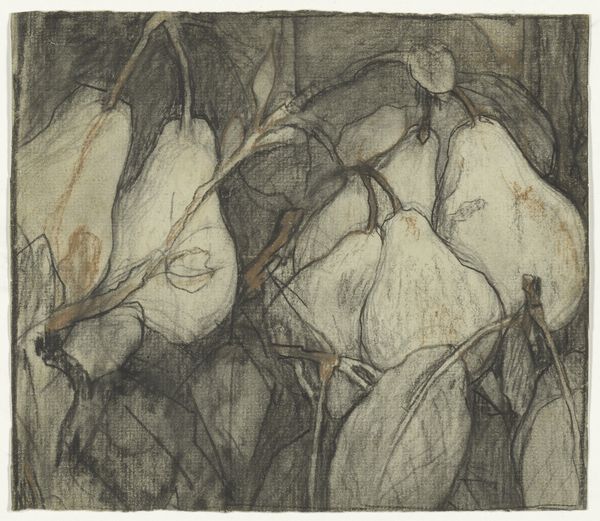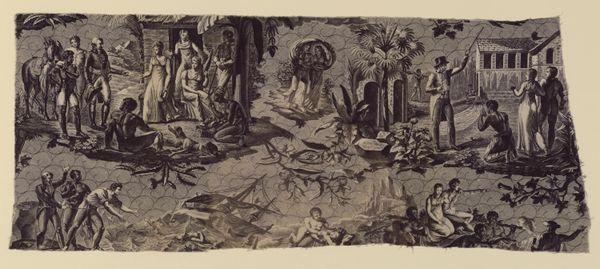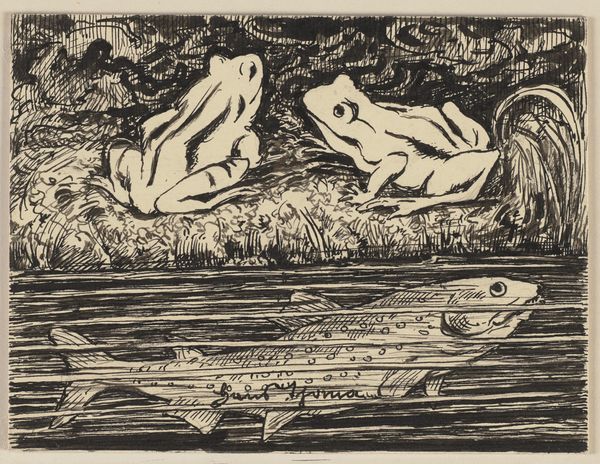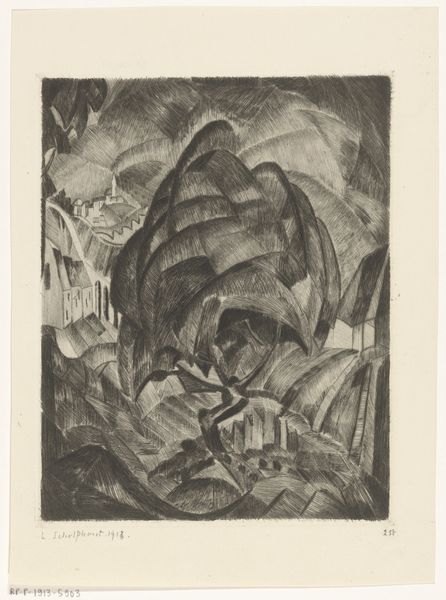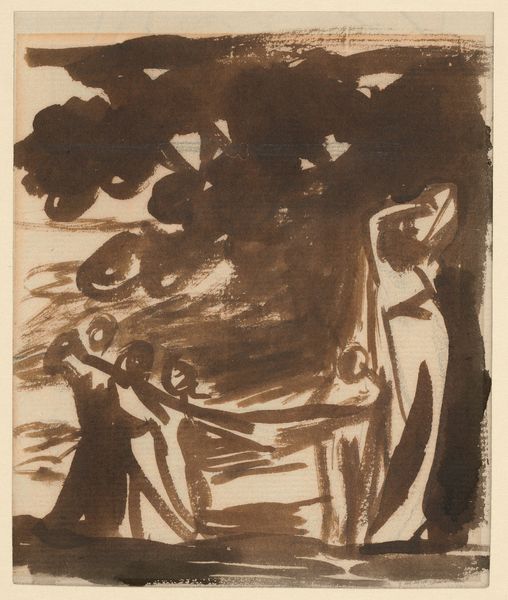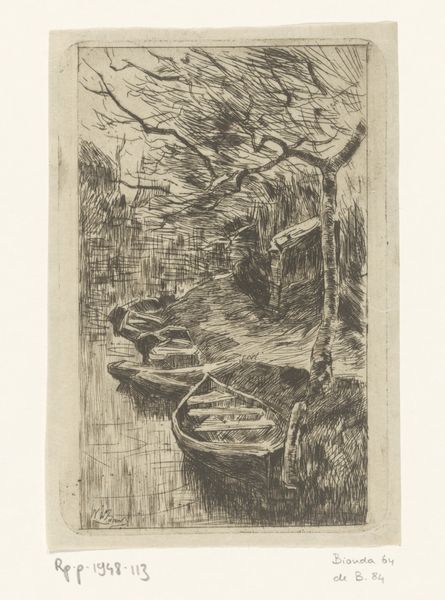
Dimensions: height 325 mm, width 496 mm
Copyright: Rijks Museum: Open Domain
Editor: This is "Vaas met bloemen" – Vase with Flowers – created sometime between 1873 and 1932 by Wilhelmus Johannes Steenhoff. It's a charcoal drawing held at the Rijksmuseum. I’m struck by the starkness of the black and white. What’s your read on it? Curator: This work, seemingly a simple still life, becomes fascinating when considering the socio-political context of abstraction's rise. Artists moved away from direct representation not just for aesthetic reasons, but also to critique the dominant power structures embedded in traditional art forms. Do you notice how the flowers, though identifiable, are almost dissolving into the background? Editor: Yes, it's like they're there and not there at the same time. Curator: Exactly! It's in this 'dissolving' that we can see a rejection of the rigid, idealized representations often used to uphold societal norms. Steenhoff, through his use of abstraction and charcoal, might be subtly commenting on the transient nature of beauty and power. Consider, too, the impressionistic style: fleeting, subjective, and personal. Does that resonate with you? Editor: It does. It's less about perfectly capturing the flowers, and more about the feeling of them. Could it be seen as pushing back against the established artistic expectations of the time? Curator: Precisely. Think about whose stories were being told in art, and whose weren’t. Abstraction opened up space for marginalized voices and perspectives. Steenhoff may be subverting expectations of realism, perhaps even gesturing towards the limitations of traditional representation to capture the complexities of human experience. Editor: That gives me a whole new way of thinking about what "still life" can mean. Thanks for opening my eyes! Curator: My pleasure. Hopefully you'll begin to engage art as a form of critical engagement.
Comments
No comments
Be the first to comment and join the conversation on the ultimate creative platform.
